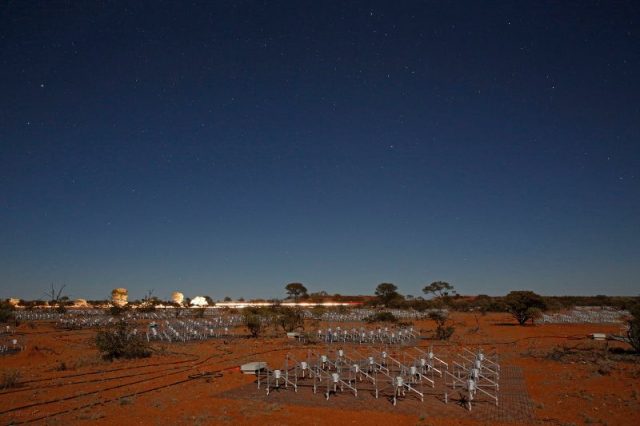Peering back to the edge of the Universe’s dark ages
Ars Technica » Scientific Method 2016-02-23

(credit: MWA project)
The Universe's first light—the earliest we can peer back in time—is the Cosmic Microwave Background, produced some 350,000 years after the Big Bang. It's the product of electrons pairing up with protons to form hydrogen atoms, releasing light in the process. From there, however, the Universe went dark until the formation of the first stars and galaxies, hundreds of thousands of years later.
Understanding the end of the cosmic dark ages can help us figure out the processes that built the Universe we currently occupy. For now, however, the wavelengths that would allow us to do so have remained out of reach. But researchers are building a new generation of telescopes that will help us reach back to this remote time, and they described their progress at the meeting of the American Association for the Advancement of Science.
The formation of hydrogen left the Universe electrically neutral. From there on out, most of the Universe's light was produced by hydrogen atoms—and typically absorbed by other atoms nearby. It wasn't until a sufficient population of stars formed that the light they produced put hydrogen back into an ionized state, allowing light to pass great distances unhindered. Thus, this "epoch of reionization" made the Universe transparent and accessible to our astronomical eyes. And, by studying it, we can examine the first large-scale structures that formed in the Universe.